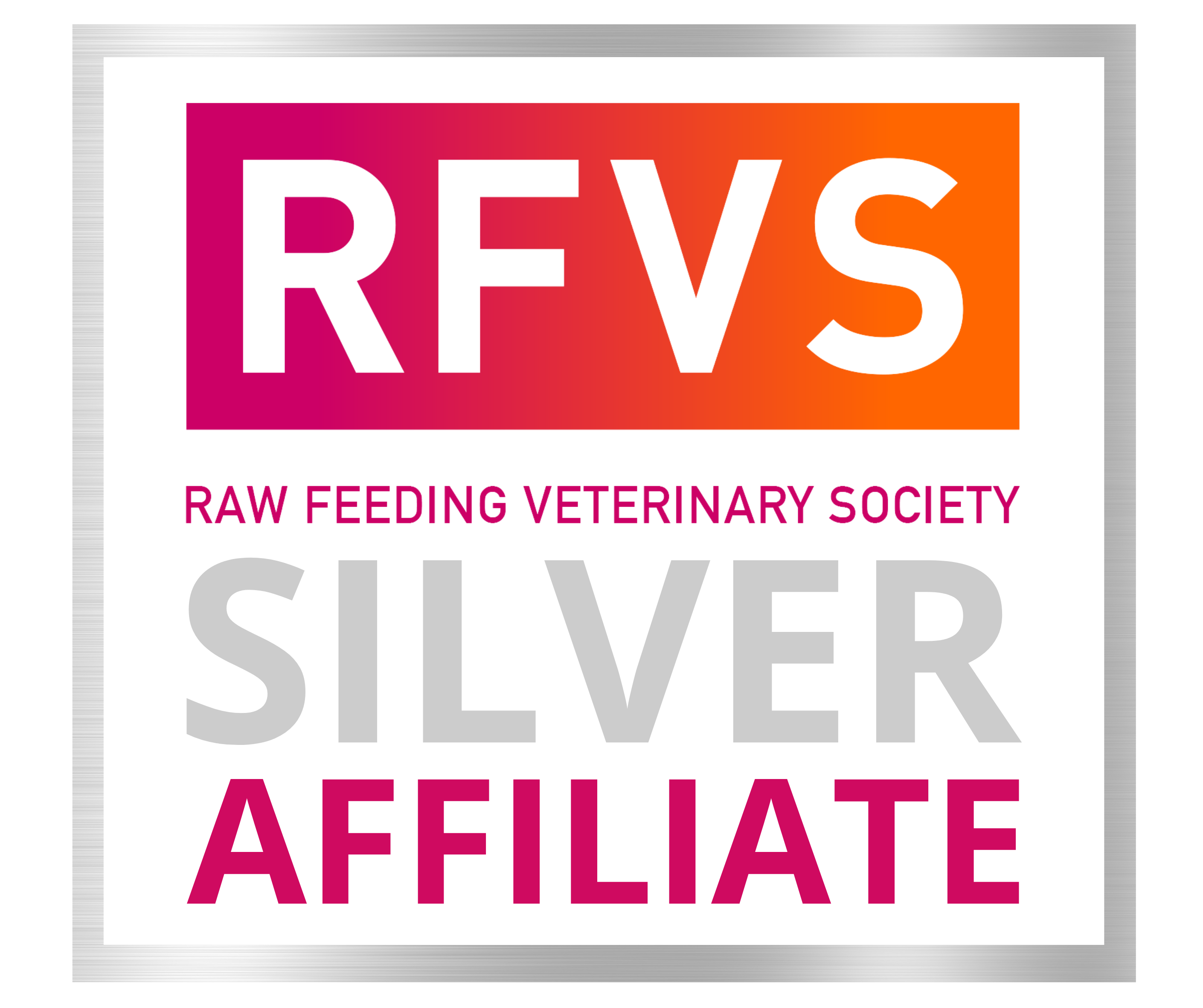Raw Feeding Evidence
THE NUTRIENT CONTENT OF RAW FOOD
Veterinarians usually recommend that pet owners purchase dog and cat foods which have the approval of the Association of American Feed Control Officials (AAFCO). AAFCO have established basic nutritional guidelines for the minimal (not optimal) requirements for cats and dogs. A feed trial involving 6-8 animals is required for a food manufacturer to claim AAFCO approval of their product. These nutritional guidelines assume that the availability and digestibility of the nutrients contained within the ingredients is uncompromised. This assumption is erroneous. Petfoods are commonly made from low-quality rendered protein (the parts considered unfit for human consumption, such as beaks and feet), and plantbased protein sources (such as corn).
Dry processed diets, high in carbohydrates, have been linked to obesity (and other health issues) in cats and dogs. Emerging evidence suggests that this increased carbohydrate load causes changes in gut bacteria that promote obesity. The AAFCO guidelines offer a safety net to ensure our pets receive basic, minimum nutrition, but optimising nutrition is essential for improving their health and wellbeing.
Ample research available on the feeding habits of feral carnivores (where their habitat and prey have not been altered by human development) provides us with appropriate nutrient profiles for domestic carnivores. This research supports the feeding of minimally processed and raw meat, bone, organs and stomach content from prey species. Based upon current research, whole prey-based diets are complete, beneficial and balanced.
THE NON-NUTRITIVE ASPECTS OF RAW FOOD
It is also important that we recognise the impact of diet on the psychology and dental health of all of our pets. In the words of veterinarian Dr Jon Lumley:
“you do not need a degree in nutrition to evaluate the effects of raw bones on a dog’s dentition – in fact, it appears that the qualification would be a serious disadvantage!”
Dr David Fagan, a Zoo Veterinary Dental Consultant, concludes from his research that animals need a ‘hassle factor’ – a certain bio-mechanical effort when eating – in order to maintain good dental health:
“it is possible to do something immediately and significantly to minimise oral problems in (captive exotic) carnivores. That ‘something’ is to re-evaluate their diet. Animals need more ‘hassle factor’ per mouthful of nutrients. The best kept secret of the last fifty years is that we must eliminate the pre-processed, the overcooked, the smashed, the blended and the pureed foods and feed our animals a more appropriate diet, duplicating the feeding habits of feral conditions.”
Studies show that more natural, carcass-based diets better meet the psychological as well as nutritional needs of carnivores, allowing them to more freely express species-appropriate behaviours.
FOOD SAFETY ISSUES OF RAW-FEEDING
An increasingly complex, global pet food supply chain makes food safety a challenge to all producers of all pet diets: processed, raw, or home prepared.
Earlier this year the American Veterinary Medical Association (AVMA) released a statement regarding raw-feeding. They referenced several studies which suggested that raw protein sources may be contaminated with disease-causing bacteria, and that pets may develop clinical illness from these organisms. They also stated that infected cats and dogs are a health risk to other animals and humans. They concluded with a recommendation to avoid raw-feeding.
The AVMA have been questioned about their motivations for this policy when there is currently a relatively much greater problem regarding contamination of processed foods, and the known incidences of human illness caused by these foods (“raw pet foods comprise approximately less than 1% of the pet food market”). There is a great deal of evidence that bacterial contamination and illness is a problem for processed pet foods; but there are extremely few documented cases of problems with raw diets (almost invariably occurring when diets are poor quality, stored incorrectly, and comprised of food unfit for human consumption).
Documented problems with commercial, processed pet foods include:
- Chemical contaminants in food (melamine and cyanuric acid)
- High levels of aflatoxins (disease-causing funghi) due to improper sourcing of ingredients
- Botulism in improperly canned dog food
- And numerous outbreaks of salmonellosis (disease caused by Salmonella bacteria) directly linked to contamination of dry pet foods and pet treats.
CONCLUSION
In this era of evidence-based medicine, the current and emerging science supports the feeding of a raw prey-based, species-appropriate diet, to domesticated carnivores for optimal health and wellbeing.
